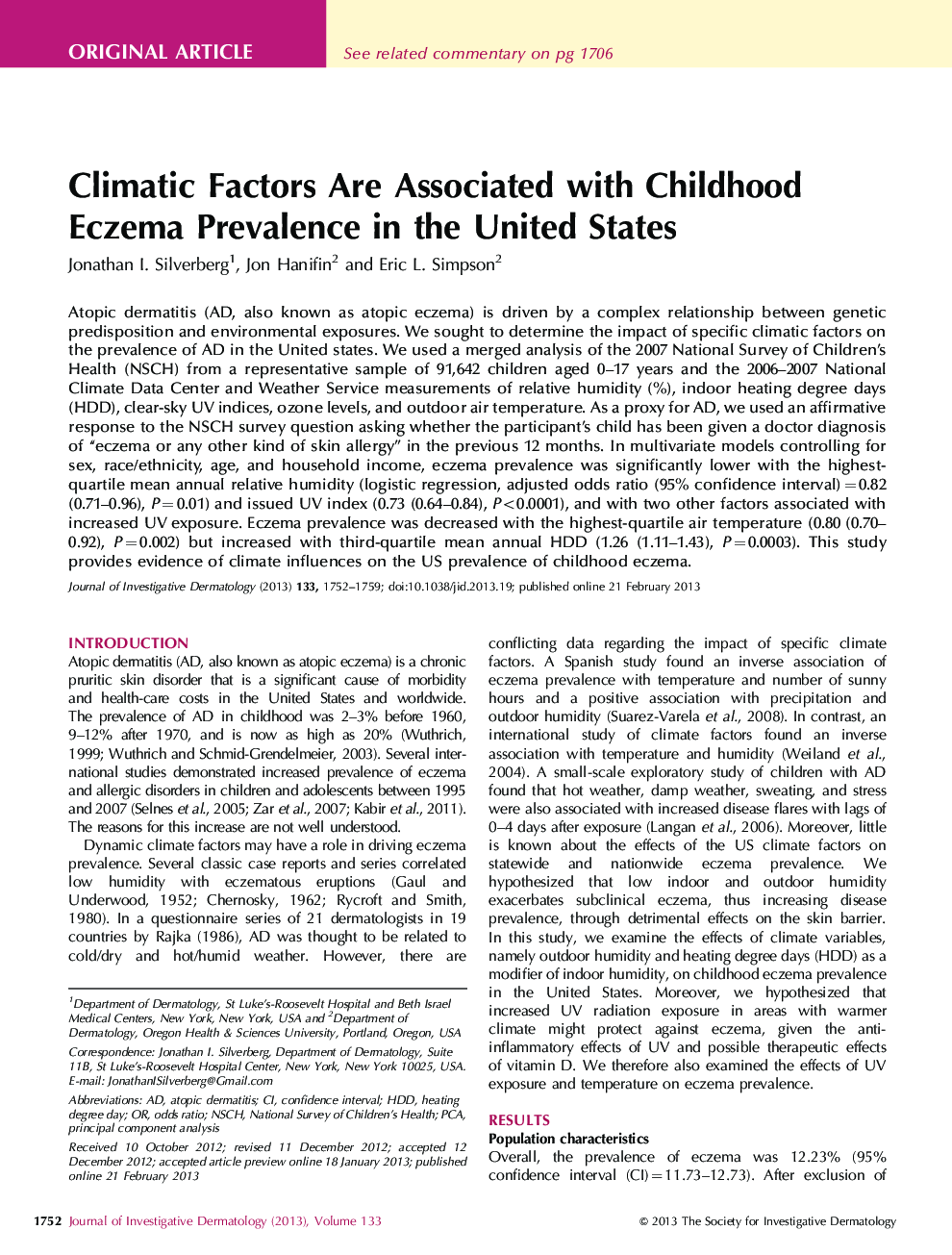| Article ID | Journal | Published Year | Pages | File Type |
|---|---|---|---|---|
| 6077638 | Journal of Investigative Dermatology | 2013 | 9 Pages |
Abstract
Atopic dermatitis (AD, also known as atopic eczema) is driven by a complex relationship between genetic predisposition and environmental exposures. We sought to determine the impact of specific climatic factors on the prevalence of AD in the United states. We used a merged analysis of the 2007 National Survey of Children's Health (NSCH) from a representative sample of 91,642 children aged 0-17 years and the 2006-2007 National Climate Data Center and Weather Service measurements of relative humidity (%), indoor heating degree days (HDD), clear-sky UV indices, ozone levels, and outdoor air temperature. As a proxy for AD, we used an affirmative response to the NSCH survey question asking whether the participant's child has been given a doctor diagnosis of “eczema or any other kind of skin allergy” in the previous 12 months. In multivariate models controlling for sex, race/ethnicity, age, and household income, eczema prevalence was significantly lower with the highest-quartile mean annual relative humidity (logistic regression, adjusted odds ratio (95% confidence interval)=0.82 (0.71-0.96), P=0.01) and issued UV index (0.73 (0.64-0.84), P<0.0001), and with two other factors associated with increased UV exposure. Eczema prevalence was decreased with the highest-quartile air temperature (0.80 (0.70-0.92), P=0.002) but increased with third-quartile mean annual HDD (1.26 (1.11-1.43), P=0.0003). This study provides evidence of climate influences on the US prevalence of childhood eczema.
Related Topics
Health Sciences
Medicine and Dentistry
Dermatology
Authors
Jonathan I. Silverberg, Jon Hanifin, Eric L. Simpson,
